“Beauty and the Beast” has long been celebrated as a timeless classic in cinematic history. Since its debut in 1991, it has become a household name, spawning numerous adaptations and solidifying its status as an entertainment juggernaut. Its enchanting narrative and endearing characters have captured the hearts of audiences across generations.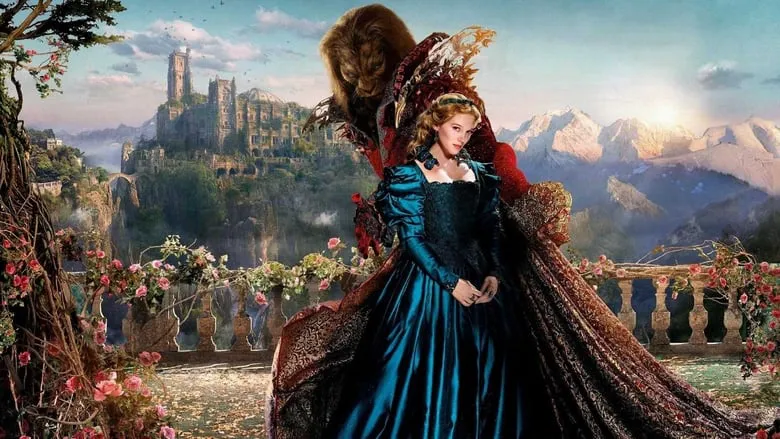
The film’s success isn’t solely attributable to its aesthetic appeal and enchanting music; more importantly, it imparts a profound and innovative message about inner transformation. “Beauty and the Beast” delves into the transformative power of love, acceptance, and the courage to look beyond superficial appearances.
Argument: Reimagining the Rose in the French Film “Beauty and the Beast”
I. The Dichotomy of Beauty and Ugliness: Exploring the Core of the Story
1. Analyzing the Contrast Between Beauty and Ugliness & Its Revelation of Human Nature
At its heart, “Beauty and the Beast” explores the conflict between beauty and ugliness and offers insights into human nature. Through the tale of Belle and the Beast, the film delves into the clash between these opposing forces, examining how perception and superficiality can cloud our judgments.
The Beast’s transformation into a monster stems from a lack of warmth and affection, a consequence of his arrogant and selfish past. Belle’s recognition of the Beast’s inner beauty and the Beast’s care for Belle serve to enlighten viewers about the relationship between beauty and ugliness. This highlights the theme that true beauty resides within.
For Belle, beauty transcends mere appearance; it’s found in inner substance and charm, inspiring others to become more beautiful themselves. Belle embodies kindness, intelligence, and courage, demonstrating that true beauty reflects moral character.
Conversely, the Beast’s image is more than just monstrous. His journey through pain and solitude, grappling with the conflict between beauty and ugliness, leads to his redemption and transformation. The film portrays him as a tragic figure burdened by his past mistakes and external ugliness.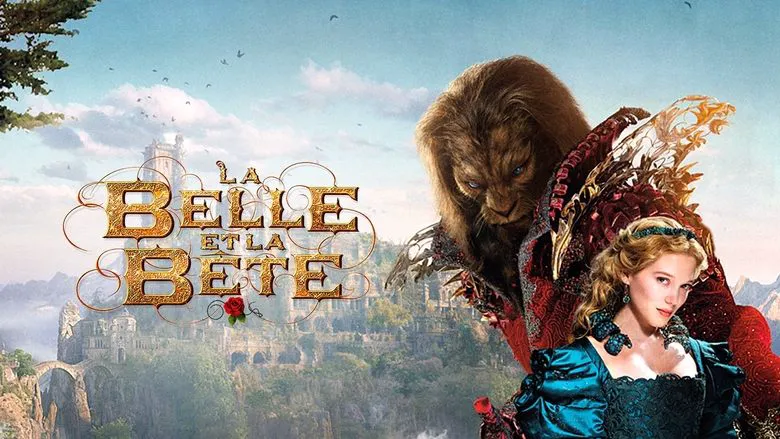
The complexity and evolution of human nature are effectively portrayed through the contrast between beauty and ugliness. The film challenges viewers to reconsider their preconceived notions of beauty and ugliness, prompting thoughtful reflection on societal standards.
2. Discussing How Beauty and Ugliness Are Depicted and Shaped in the Film
The depiction and shaping of beauty and ugliness in “Beauty and the Beast” are crucial. The director uses character portrayals and plot development to showcase the confrontation and conflict between these elements. These vivid representations serve to reinforce the film’s theme of inner versus outer appearances.
The contrasting images of the beautiful Belle and the Beast are striking. Belle is portrayed as naturally beautiful, intelligent, and independent minded, with a compassionate heart. Her beauty extends beyond her physical appearance to her acts of kindness and bravery.
In contrast, the Beast is depicted as a rough, ugly, and dangerous creature. His monstrous form evokes fear but also hints at the inner turmoil that lies beneath the surface.
The film enhances Belle’s beauty and confidence through stunning scenes and exquisite hand-drawn animation. Conversely, the Beast’s surroundings are portrayed as dark, dilapidated, and desolate, emphasizing his ugliness and fearsomeness. These visual cues contribute to the audience’s understanding of each character’s internal state.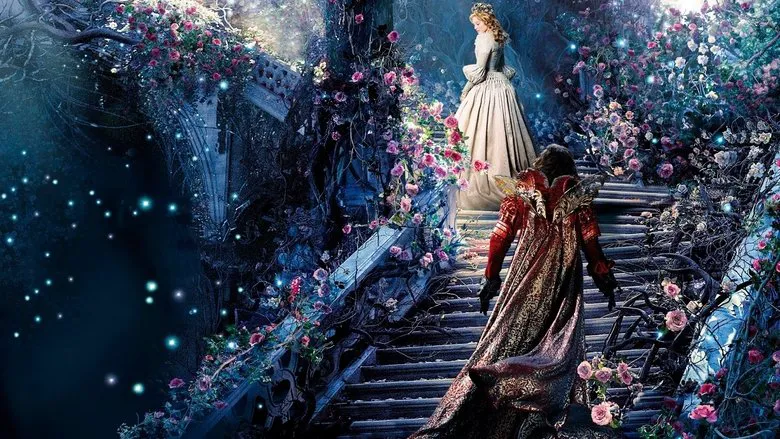
Beyond visual representation, the film’s plot and dialogue further shape the conflict between beauty and ugliness. The narrative arc explores how perceptions change over time as characters interact and reveal their true selves.
Belle’s unwavering determination and belief in the possibility of good things serve as examples. Though held captive, she remains compassionate and seeks to understand the Beast’s hidden depths.
The Beast, on the other hand, relies more on fear and anger to handle situations. These plot elements and dialogues reflect the interplay and conflict between beauty and ugliness. The progress of their relationship is built upon these contrasting qualities.
II. Expressing Character Relationships: Emotional and Spiritual Transformations
1. Using the Relationship Between Belle and the Beast as an Example, Analyze How the Director Expresses Emotions and Ideas Through Character Relationships
In “Beauty and the Beast,” the relationship between Belle and the Beast is central to the story. The director explores individual emotions and ideas through their complex and diverse emotional interactions. Their evolving dynamic offers nuanced insights into themes of understanding and redemption.
Initially, Belle is confined to the Beast’s castle, feeling uncomfortable with his ugliness and barbarity. Her imprisonment breeds conflict, and she yearns for freedom and a return to her former life.
However, over time, she gradually begins to sense the Beast’s warmth and care. This emotional journey is depicted through a series of carefully crafted scenes and dialogues, revealing mutual respect and empathy.
For example, when Belle teaches the Beast how to read and understand literature, they establish a special connection and understanding. Knowledge becomes a bridge that allows them to see beyond superficial differences.
The disputes and misunderstandings between Belle and the Beast also illustrate the evolution of emotions and ideas. These disagreements help them to learn from each other and grow in their understanding.
Through these conflicts, the director reveals the inner complexities of Belle and the Beast, as well as the forces pulling them together. Love blossoms amid their vulnerabilities.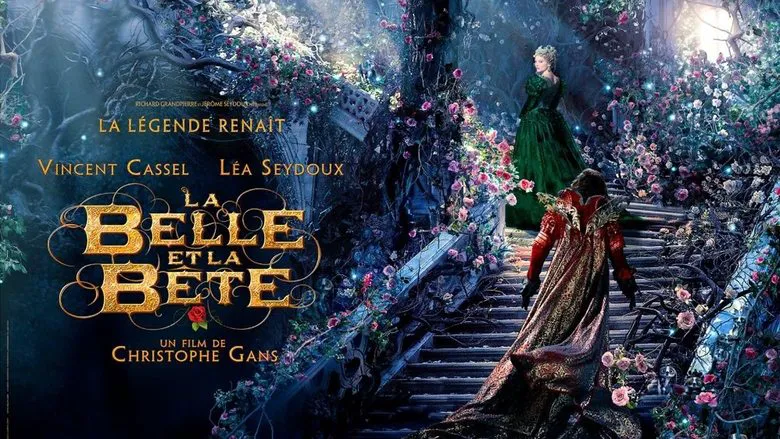
Through the emotional changes and evolution of Belle and the Beast, the director successfully portrays themes of happiness, fear, pain, trust, and love. These emotions resonate powerfully with the audience, enhancing the film’s lasting impact.
2. Exploring the Beliefs and Positivity Behind Character Development, Demonstrating the Importance of Character Relationships
Through the portrayal of character relationships, “Beauty and the Beast” successfully showcases the beliefs and positivity behind character development. It celebrates human potential and the transformative power of inner strength.
For instance, the Beast undergoes a transformation from anger and loneliness to self-awareness, ultimately seeking love and acceptance. This journey highlights the positive impact of empathy and compassion on personal growth.
This change is not only due to finding true love but also because Belle’s presence in his life alters his perception of himself and his destiny. Her unwavering belief in him allows him to shed his bitterness and embrace the prospect of change.
This transformation underscores the importance of character relationships. Belle’s ability to help the Beast achieve inner transformation stems from the foundation of love and trust they establish. This bond enables them to grow and develop together.
Character relationships play an equally important role for Belle. As she spends time with the Beast, her differences with the other villagers become more apparent, leading to deeper insights into social issues. She recognizes the prejudice and narrow-mindedness that pervade their society.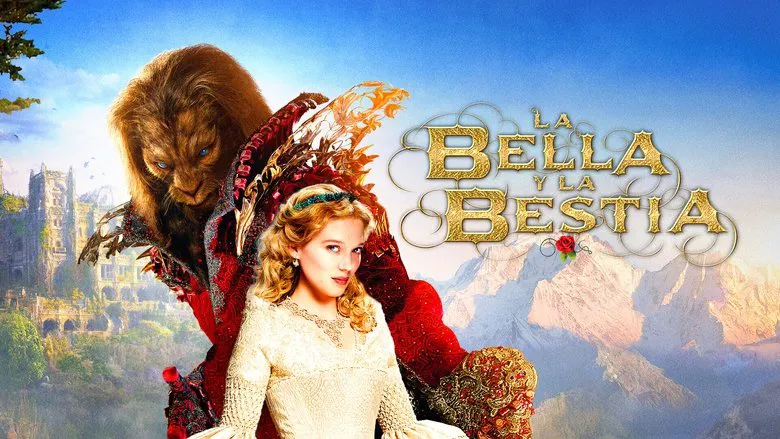
Through the Beast’s influence and support, she grows into a strong and independent individual, unafraid to confront social injustices and discrimination. His encouragement empowers her to stand up for her beliefs and challenge societal norms.
These transformations, achieved through character interactions, highlight the significance of interpersonal relationships in character growth. They emphasize that authentic connections nurture personal and social development.
By shaping character relationships and showcasing the beliefs and positivity behind character development, the film successfully conveys the depth and emotional resonance of the story, prompting viewers to reconsider the importance of interpersonal relationships in life. The positive impact of these connections serves as a powerful message.
III. In-Depth Analysis of Scene Composition: Creating Visual Spectacles
1. Examining the Layout and Zoom Techniques of Film Scenes, Demonstrating How the Director Uses These Techniques to Engage Viewers and Convey Information
Scene layout and zoom techniques are essential tools used by the director to capture the audience’s attention while conveying the story’s message. The visual elements effectively contribute to the film’s overarching themes.
In “Beauty and the Beast,” the use of scene layout and zoom techniques is exquisite, providing viewers with a compelling viewing experience. The composition enhances storytelling and reinforces the film’s emotional impact.
Scene Layout: The film employs a wealth of stunning special effects and architectural settings to create a unique and realistic backdrop. These detailed environments enhance the atmosphere and storytelling.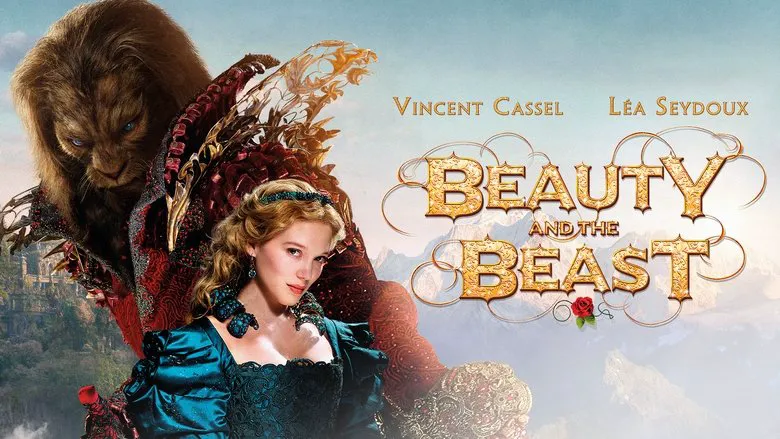
The detailed depiction and meticulous layout of the castle’s interior and exterior, the forest, and the dining hall leave a lasting impression. Each setting is imbued with detail that contributes to the overall visual narrative.
For example, the castle’s interior layout is rich, reflecting a classical and luxurious atmosphere, while the contrast between candlelight and shadows highlights the emotional clarity of the story. The interplay of light and darkness effectively mirrors the internal states of the characters.
The film also employs multiple scene transitions and interactions, enhancing the film’s rhythm and dynamism, with each transition carefully presented to the audience, leaving a lasting impression. These transitions contribute to the narrative’s pace and keep the viewer engaged.
Zoom Techniques: The film uses zoom effects to focus on specific characters, objects, actions, or dialogues to convey important information.
For example, when Belle gives up her escape, the director uses zoom techniques to emphasize Belle’s figure, highlighting her importance and unwavering belief. This cinematic emphasis reinforces her courage.
In the Beast’s scenes, the director uses zoom techniques to present the faces of the Beast and Belle, thereby highlighting the Beast’s internal conflicts and Belle’s understanding of the Beast’s inner world. These close-ups capture subtle emotional nuances and contribute to character development.
Through the skillful use of these techniques, the director successfully captures the audience’s attention while conveying the film’s emotional and thematic content. The visual mastery enhances the overall impact of the story.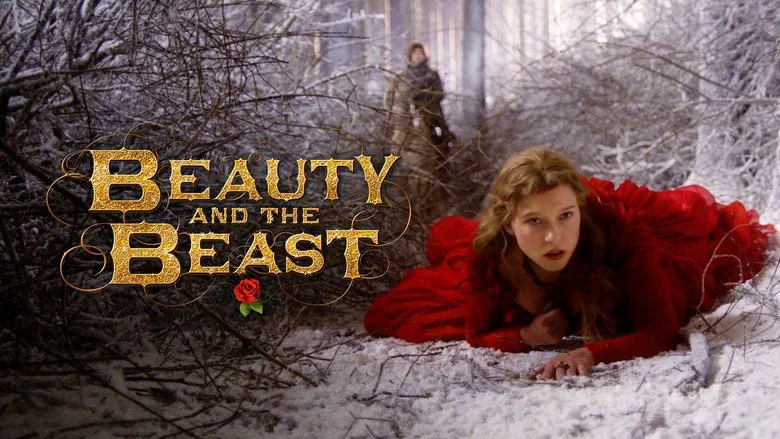
2. Examining How Scenes Showcase Character Emotions and Story Development
Scenes play a vital role in the film, showcasing the evolution of character emotions and the development of the story. The scene design is integral to conveying emotional context and advancing the narrative.
In “Beauty and the Beast,” the emotional journey of the characters is often accompanied by specific scene designs and layouts. The settings reflect and accentuate their internal experiences.
For example, the Beast, as the master of the castle, is attentive to creating beautiful scenes and atmospheres. His efforts to create beauty underscore his transformation.
Moreover, after meeting Belle, he begins to demonstrate an understanding of his emotions towards her. His newfound empathy prompts acts of kindness and consideration.
In the castle dining hall scene, the Beast invites Belle and transforms into human form, showcasing his realization of the importance of love. This scene showcases his transformation and his genuine desire to connect with Belle.
At this moment, the details of the building and tableware vividly illustrate the Beast’s care and compassion for Belle. These visual elements reflect his evolving character.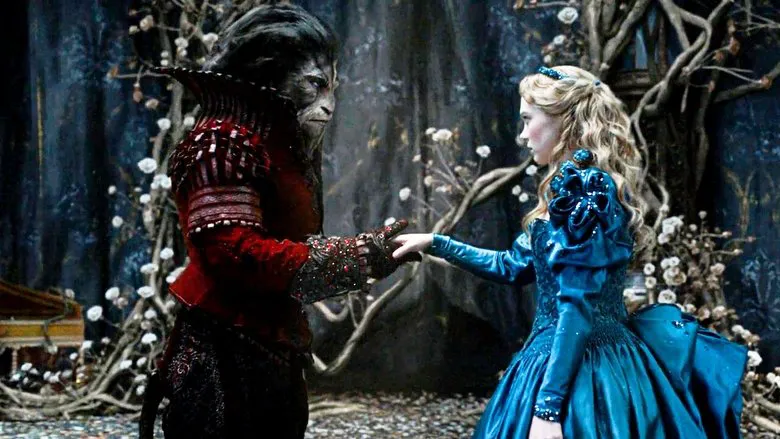
The Beast is no longer the savage creature destroying the castle and his own life but a humanized character who deeply desires to be loved. His transformation exemplifies the redemptive power of affection and understanding.
Conclusion
1. Summarizing Previous Observations and Arguments and Reaffirming the Film’s Significance
Through an examination of “Beauty and the Beast,” we can see how the director successfully conveys character emotions and themes through exquisite scene layouts and zoom techniques.
The relationship between Belle and the Beast, as one of the core elements of the story, showcases the emotional evolution and ideological transformation of the characters through changes and performances within the scenes.
The film’s significance lies in its ability to convey a classic story while employing modern techniques and themes, allowing young audiences to understand and appreciate the tale. The enduring themes resonate across generations.
Additionally, the film explores modern themes such as emotional issues and inner strength, using contemporary techniques and scenes to convey the value and quality of life. “Beauty and the Beast” remains relevant through its universal themes and innovative execution.
2. Discussing the Film’s Impact on the Modern Film and Television Industry
“Beauty and the Beast” continues to hold a place in modern culture, and its impact on the modern film and television industry is profound. The film’s success established a timeless standard for animated storytelling.
The film’s innovative scene layouts, special effects, and character designs have amplified innovation and patterns within the genre, pioneering a modern trend in settings, character portrayals, and scene performances, which has had a far-reaching impact on the modern film industry. The innovative approaches paved the way for future creativity in animated cinema.
The film fully showcases the power of emotions and ideas, which is also prevalent in the modern film and television industry. The emphasis on emotional depth and thematic richness remains a vital part of contemporary filmmaking.
This approach is not mutually exclusive with science fiction and visual effects, and the film industry continues to innovate and explore the balance between imagery and meaning. This balance is crucial for creating engaging and impactful cinematic experiences.
Additionally, there is the development or expansion of foundational concepts and ideas, such as self-understanding, family, and the recognition of mature themes like social identity. Themes continue to evolve as cinematic narratives explore personal and social complexities.
“Beauty and the Beast” successfully conveys themes and emotions, leaving a lasting impact. Therefore, this film has played a positive role in promoting the development of the modern film and television industry. The film’s contributions have helped to shape the landscape of entertainment today.